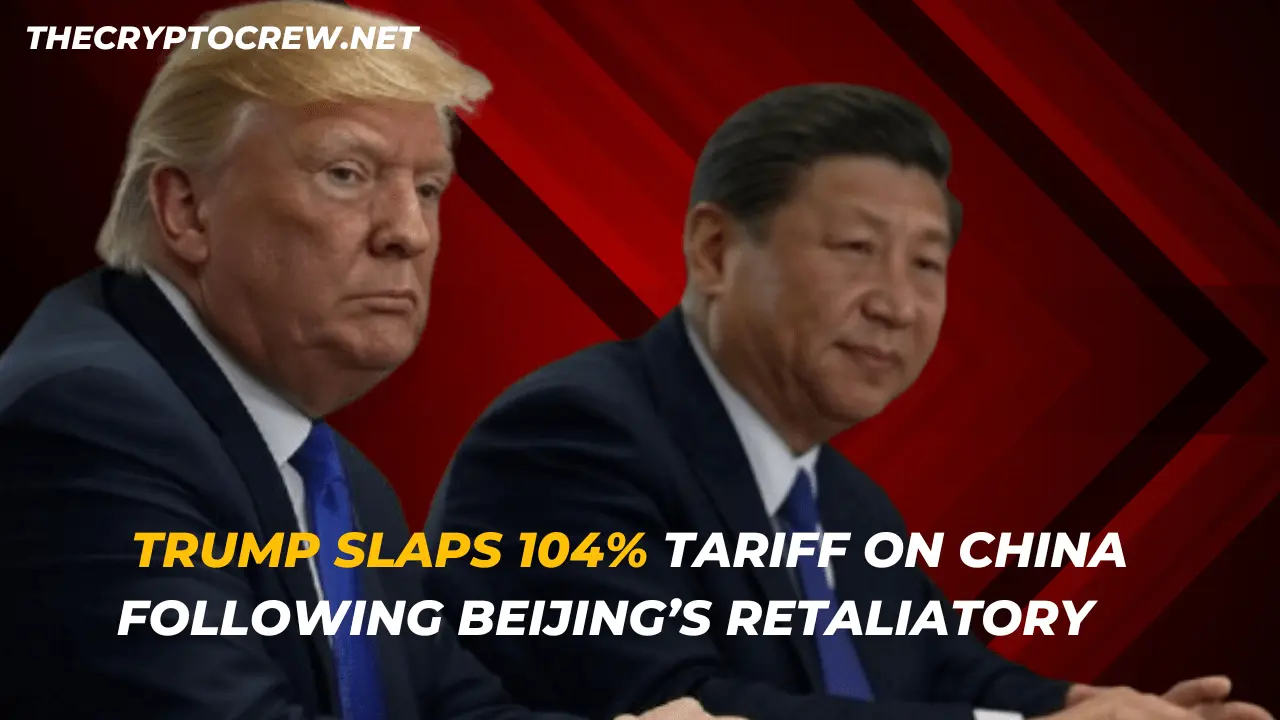On April 9, 2025, President Donald Trump dramatically intensified the trade dispute with China by announcing a staggering 104% tariff on all Chinese imports.
Background of the Trade Dispute
This decision came as a direct counterpunch to China’s refusal to retract its own retaliatory tariffs, which were enacted in response to Trump’s earlier push for “reciprocal” trade policies aimed at leveling the playing field.
The saga kicked off when Trump rolled out a 34% tariff increase on Chinese goods, layered atop an existing 20% duty, resulting in a combined 54% rate. His rationale was straightforward: mirror the tariffs that other nations, including China, impose on American exports. China, however, didn’t flinch.
China’s Retaliatory Measures on Reciprocal Tariff
On April 7, Beijing fired back, announcing a matching 34% tariff on U.S. goods, set to take effect on April 10. Trump issued an ultimatum, demanding China scrap its new tariffs by April 8 or face steeper consequences.
When China held its ground—declaring it would “stand firm and fight to the finish”—Trump doubled down. He tacked on an additional 50% tariff, bringing the total to an unprecedented 104%, effective just after midnight on April 9.
White House Press Secretary Karoline Leavitt framed the move as a show of strength, saying, “President Trump doesn’t back down when America is challenged—he hits back with force.”
The fallout was immediate. U.S. stock markets tumbled, with the Dow dropping over 800 points by midday on April 9, as investors braced for a potential trade war.
Impact on U.S. Markets and Consumers
China supplies roughly 17% of U.S. imports, including critical items like semiconductors, clothing, and machinery.
Analysts warn that a 104% tariff could spike consumer prices significantly—electronics alone might see a 20-30% hike, according to economic projections from the Peterson Institute for International Economics.
China didn’t sit idly by either. Alongside its tariffs, Beijing tightened export controls on rare earth minerals—key components in everything from smartphones to electric vehicles—dealing a blow to U.S. manufacturers. In 2024, China controlled 70% of global rare earth production, making this a potent weapon in its arsenal.
Trump has hinted at openness to negotiations, stating on X, “China knows my number if they want to talk.” But for now, both nations appear locked in a standoff.
The U.S. imported $427 billion in goods from China in 2023, while exporting just $148 billion the other way, a gap Trump has long criticized. His latest tariff gambit aims to shrink that deficit but risks disrupting global supply chains already strained by years of pandemic aftershocks.



